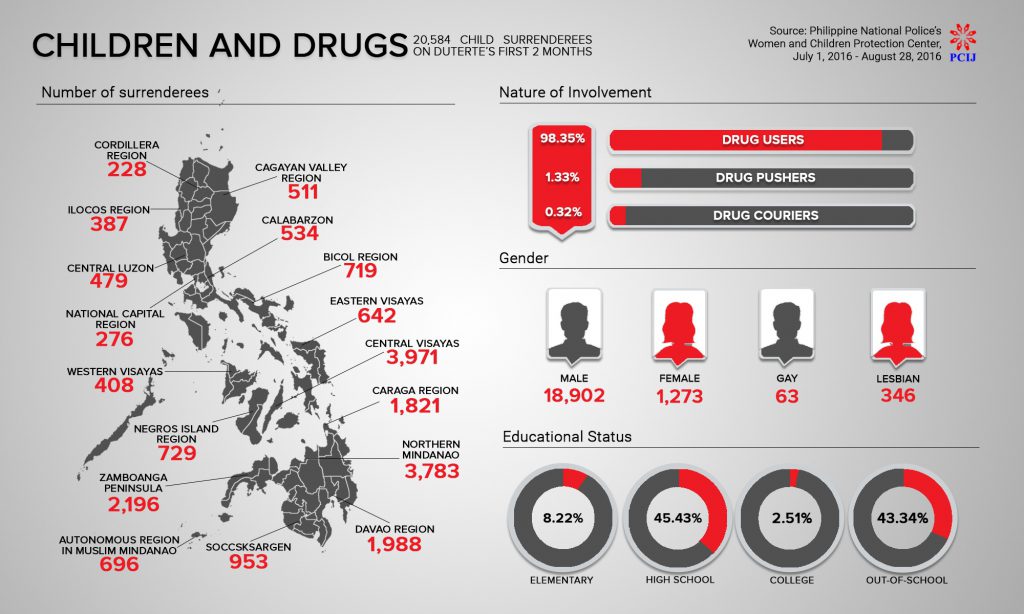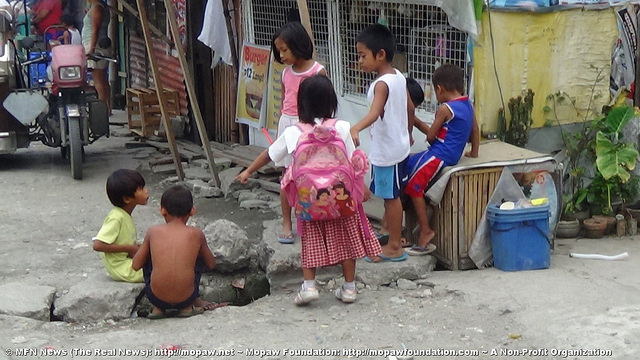The Campaign Against Drugs – Will Drug Testing in Schools Impact Our Drug Crisis?
Since the campaign period, President Rodrigo Duterte was adamant in crushing the illegal drug trade menacing the country. He has made it his top priority to cut down a deeply seeded problem in society, even at the expense of countless lives and alleged extrajudicial killings.
Duterte specified a timeline of six months to address the issue on illegal drugs but has lately requested for a 6-month extension, as he did not expect how deeply the country is entrenched on drugs. He presented a long list drug suspects and a drug matrix that linked people in power, including politicians, to drug lords and pushers. He exposed the so-called rise of narcopolitics and its eventual perpetuation if the issue on illegal drugs was not addressed immediately.
More than 700,000 drug pushers and users have surrendered under Oplan TokHang in just a few weeks after Duterte’s assumption as president. But according to the Dangerous Drugs Board (DDB), there is an estimated 1.8 million drug users in the country today. This is close to 2% of the total population of the country. In 2015, DDB reported that there were 1.3 million drug users with around 4,000 individuals admitted to a rehabilitation facility. Most of those rehabilitated were married males in their mid-20s whose highest educational attainment was high school.
Drugs and minors

But this gargantuan issue, from the proliferation to the use of illegal drugs, is specifically affecting another demographic of society – the minors. In a report from the Philippine Drug Enforcement Agency (PDEA) to the House Committee on Dangerous Drugs, close to 1,000 minors have been arrested from 2006-2016 in relation to drugs. The numbers also rose sharply from 2010 onwards from 18 arrests in 2010 to 464 arrests in 2016. In 2015, DDB also reported, “as to the age when the client first tried to use drugs, around forty-nine percent (48.85%) of the reported cases belong to the age group of 15-19 years old.”
There is much less information when it comes to the profile of minors in relation to substance abuse and illegal drugs. But it is no secret that there are individuals who have started using drugs when they were still minors, while some have been used as drug mules or runners. In 2004, the International Labour Organization (ILO) embarked on a study in determining the involvement of minors in the illegal drug trade. It revealed that the percentage of minors involved was increasing at an alarming rate. More than a million were already involved in drugs (whether as pusher or user) at that time, which was six percent of the population.
As to why minors got involved in the drug trade, several reasons emerged. Minors were often recruited by syndicates as a way to circumvent the law. Juvenile justice in the Philippines already classifies children aged 9 to be criminally responsible for their actions. Younger children, including teenagers, are also likely to go in and out of jail more often as they are less likely to be detained longer for their petty crimes. As such, syndicates use children to transport or sell drugs knowing that they can escape or be released from jail. In exchange, minors involved in the drug trade will get easy money. Some would start to become users themselves, thus forming a habit of drug use at an early age.
But interestingly, minors in the low income bracket are not the only ones involved in the drug trade. Even those in the upper echelons in society are involved as users and pushers as well. The recent Close Up Forever Summer Tragedy was one classic example of how well-to-do minors get involved in drugs. Masked by concerts and music festivals, minors were actually attending these events for something else. According to some attendees and bystanders, drugs were openly used and distributed in these kinds of events, and more fatally mixed with alcohol. Five people died, including a minor, because of this.
Drug testing in schools
As part of the government’s efforts in curbing the deadly drug trade in the country, all agencies were called to come up with synchronized solutions. The talk on strengthening the enforcement on drug testing was reiterated over the media and the presence of PNP Chief Rolando “Bato” dela Rosa gave the campaign against illegal drugs a face to remember. The President himself made no hesitation to give a “shoot to kill” order to those drug personalities who openly defied police arrest.
But in the case of minors, this may not necessarily apply as laws on child protection (locally and internationally) set the child as victims in these circumstances. And it gets more complicated as drugs come into contact with children even within school premises. Drugs like shabu could easily be slid in pockets or beneath undergarments to prevent detection in schools. There are even some reports that drugs were being exchanged at the school gates. More alarmingly, even some school personnel were allegedly involved in the drug trade and act as influencers to students as well.
The Dangerous Drugs Board has issued Board Regulation No. 3 s. 2009, which outlines the implementing rules and regulations for conducting drug tests in secondary, tertiary, and other learning institutions. It mandated however, only mandatory random drug testing which will cover a sample size that can represent the prevalence of drug use in a certain area.
These drug testing activities were conducted by the Department of Health, in conjunction with other agencies like the Department of Education, the Commission on Higher Education, and the Dangerous Drugs Board. Tests have been widely conducted roughly every 6 years: one in 2003 and another in 2009.
But because the drug tests were not universally done (not everyone in school were tested), the prevalence of drugs in a school could not be accurately determined. And the current law on drugs RA9165 does not permit mandatory drug testing for all students. Even for employees, except for pre-employment, universal drug testing could not be conducted. The results of drug tests were also highly confidential and could not be divulged easily. Ergo, the information generated from random drug tests will only be for purposes that will serve the larger institutions like the government.
This becomes a dilemma as drug testing may provide information on the effectivity of the government’s campaign against drugs but not on a specific establishment, institution, or in this case, schools. The Commission on Higher Education recently stated in the media that it plans to impose drug test results as part of admission and retention in tertiary schools. But some youth groups have already opposed this.
The only time perhaps when drug testing is mandatory for all citizens is during the application or renewal of a driver’s license.
Setting up interventions

Another issue that might emerge from drug testing is the question of, “So what’s next?” Finding out if someone is positive is not the solution the problem. Even those drug personalities who have openly surrendered to the police do not solve our problem. Solving the crisis on drugs means providing interventions to drug users, helping them rehabilitate. It also involves the reduction of supply and demand for illegal drugs.
The government’s biggest challenge right now is how to set up rehabilitation facilities and programs for the countless drug users who have surrendered. And for those minors, who have been found positive, where will they go? Will they also be mixed with the adults like what’s happening right now in our city jails? Will they be able to continue their education?
The Philippine National Police is doing its share through the Drug Abuse Resistance Education (DARE) Program. These are information classes or seminars conducted by the police in schools on the awareness and prevention of illegal drugs. The Department of Education also expressed their plan to incorporate a curriculum on drugs but these are interventions that may not address minors who are already deeply involved in the drug trade as users or pushers.
As stated by the DDB, close to half of drug users have already been exposed to drugs when they were minors. Drug testing is only half of the solution. The more important part falls under the interventions before and after drug testing in order to pacify the drug menace that has consumed our country’s youth.
This post is supported by a writing grant from the Philippine Center for Investigative Journalism (PCIJ)
